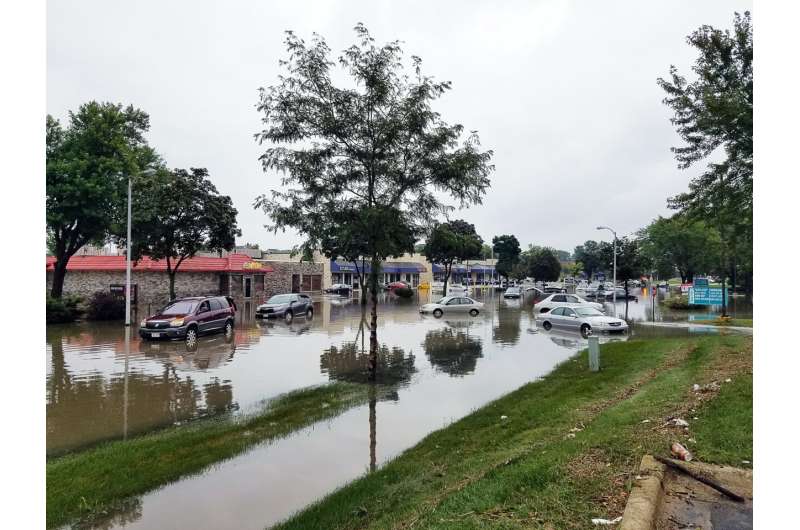This article has been reviewed according to Science X's editorial process and policies. Editors have highlighted the following attributes while ensuring the content's credibility:
fact-checked
trusted source
proofread
Expert discusses deadly flooding along California coast due to torrential rain

Violent storms continue to rake large portions of the California coast, causing heavy rainfall, mass flooding, wind damage, and up to 12 deaths. The storms started as a "bomb cyclone" over New Year's weekend and seem to have not leveled off. On Sunday, President Joe Biden declared a federal emergency in California. Virginia Tech geophysicist Manoochehr Shirzaei has been closely tracking the storm system via satellite radar imagery. His main concern: outdated levees.
"The main concern is the outdated levees, many of which were built decades ago—without modern engineering—to provide limited flood protection for fertile lands within the floodplain," said Shirzaei, director of the Earth Observation Lab at Virginia Tech.
"In recent years, on one hand, [there has been] increased population density and assets value, and on the other hand, [we have] rising sea levels and more frequent flooding and intense flooding due to climate change and, land subsidence exacerbates the hazards and risks associated with floods."
Shirzaei's lab has been in communication with various agencies and research centers in California to provide geospatial data obtained from radar satellites to assist in decision-making and assessing hazards and risks. The lab can perform "near-real-time monitoring with a few days' latencies." In order to complete real-time monitoring of such storms, Shirzaei said additional CubeSats would have to launched.
"Assuming that relocation is not viable, as sea levels rise and lands continue to subside, coastal flooding and erosion will likely become the single major hazard to coastal communities and the environment. Additionally, the current coastward migration of the population will likely increase the risk of flooding," Shizaei said.
"However, implementing defense mechanisms such as building new levees, upgrading existing ones, and enhancing/maintaining natural protection systems—such as wetlands and mangroves—can significantly reduce the risk of flooding to coastal communities."
"California has been dealing with other end-member extremes, namely unprecedented droughts. In the era of climate change, such extreme events are becoming a norm" Shirzaei said. "Successful adaptation and mitigation strategies should take both extremes into account and harness the power of one to reduce the impact of the other. For instance, the excess water supply during atmospheric rivers can be treated and banked underground to be used during droughts."
Provided by Virginia Tech




















